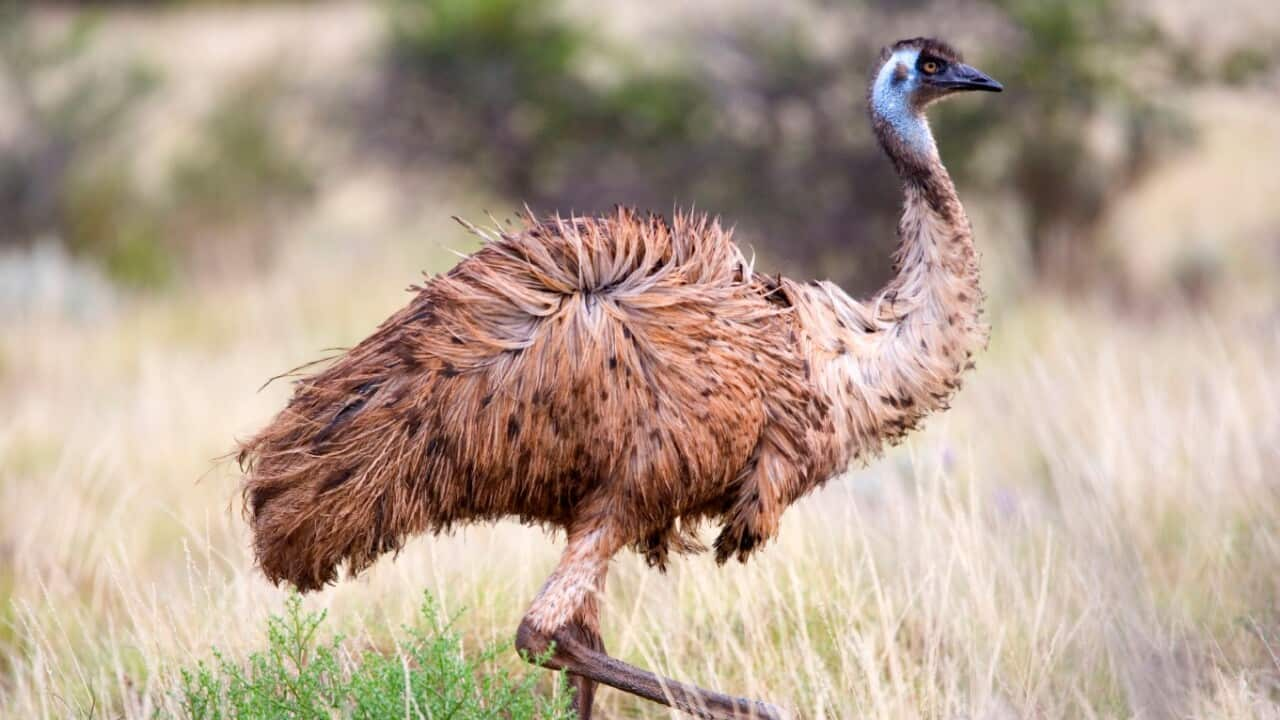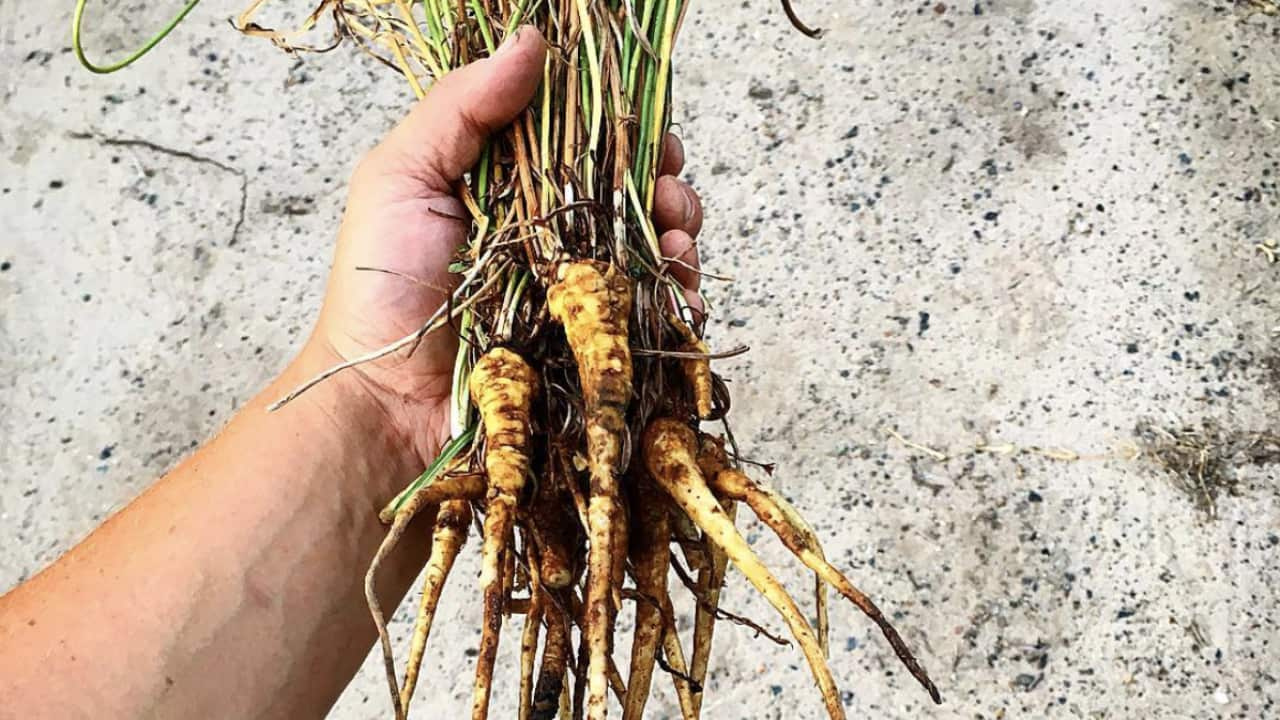When we think of Australia’s native foods, we often picture the rugged, organic agriculture from which it comes. Native food isn’t scanned at the cashier, it’s foraged from the bush and pulled from dirt.
However, ingredients like and wattleseed are endemic to Australia: perfect for our climate and suitable for our soils – but they don’t simply spring up out of nowhere because they’re part of the natural landscape. It's a myth that Indigenous foods lack systemic cultivation.
Animal-seed dispersal (where seeds are transported from a parent plant through an animal’s digestive system and propagated elsewhere) is a process that Wardandi Bibbulmun traditional owner and her people have benefitted from for thousands of years. ‘Gathering’ food isn’t about stumbling across something and reaping the rewards, it’s about knowing where it grows and harvesting the bounty.
“We were great observers of the natural landscape, so we would be observing what these animals would be doing,” she says.
In Australia, emus are arguably our most important seed dispersers, especially when it comes to our most delicious and nutritious native foods. Unlike other seed dispersers, like the cockatoo and the , the sheer size of emus makes them an important player in this ecological process. “The emu is a very large bird, the largest extant in Australia, and so it is able to swallow and disperse seeds – often within fruits of large-seeded plant species that would not readily be dispersed by smaller birds or other animals,” says from the School of Environmental Science at .
“The emu is a very large bird, the largest extant in Australia, and so it is able to swallow and disperse seeds – often within fruits of large-seeded plant species that would not readily be dispersed by smaller birds or other animals,” says from the School of Environmental Science at .

The emu diet actually helps native ingredients flourish. Source: Getty Images
, emus eat by "gulping and digesting" and have an appetite for tasty native foods like , , , , kernels, kangaroo apples and the tiny lemony-tasting fruits of the . This, combined with their long legs and fast pace (their home range exceeds more than 50 kilometres), means that emus can disperse fruits that are palatable to humans over long distances.
The emu is a very large bird … and so it is able to swallow and disperse seeds – often within fruits of large-seeded plant species that would not readily be dispersed by smaller birds or other animals.
We might like to think that emus might have some awareness to their important role and somewhat super abilities, like crows who are in the way they gather food and collect resources, but actually, they have rather and to them, seed dispersal is just a matter of when nature calls.
Germination: Not all animals are created equal
Emus are even less aware of their high-performing digestive system that when they come out the other end. Aunty Dale says this is why some introduced species, who also like to eat native fruits and seeds, are putting this seed-dispersal system at risk.
“So many native animals do this. They’ll eat fruits and disperse the seed across the land. And that’s why the imported animals are so dangerous to the environment because they will often have different sorts of stomachs and they will often eat the fruit and they will digest the seed. If the seed has been digested, it doesn’t just pass through the hole. Then it's not going to go into the land and germinate,” says Dale.
However, Professor Enright says that humans are the most responsible for endangering this practice.
“The emu has declined in terms of its geographic range and density mainly through land clearance and habitat fragmentation. It is now rare or absent from some areas where it used to occur – for example, urban areas and their associated natural bushland remnants. So people are probably the most important agent of impact.”

The emu appetite for quandong is beneficial for everyone. Source: Getty Images
A butt nut
Another fascinating element of emu poo (yes, really) is not just how its seeds can germinate into plants, but how it can be collected and eaten as a snack.
Quandong fruits carry an oil-rich kernel inside its pitted stone, which is very high in . The stone, which looks a bit like a brain, is impossibly hard to crack open. When an emu , however, it softens the shell, and its droppings leave a ready supply of easily opened quandong nuts.
“You can eat it raw or roast them,” says Aunty Dale. “Or use [it] as medicine – particularly for people with sore joints because they're both [quandong and sandalwood nuts] are really, really high in essential fatty acids. Both the quandong or sandalwood nuts, both have very high oil content. And in [the] case of sandalwood, that’s at least 69 per cent oil."
“They have their own taste and an interesting texture. The quandong kernels can taste a little bit like marzipan and the older ones have more of a mild flavour and when they’re roasted they’ll taste more like a roasted almond. So they look a little bit like hazelnuts because they’re small and round, but they taste more in that almond-y flavour.”
Healthy and delicious
While in recent years to sustain supplies, seed dispersal and natural growth are still important.
In the same way that we would rather see our wildlife thriving in their natural habitat as opposed to being raised in captivity, seed dispersion keeps bush tucker naturally wild. It also makes these ingredients organic and pesticide-free – something Aunty Dale says is the biggest appeal of our native food.
“If you get more into your bush tucker, especially when it’s wild harvested, the nutritional value of these foods is quite amazing," she says. Quandong has impressive levels and other trace elements, while "wattleseed is very high in protein and fibre and high iron and high in zinc", she adds.
"These foods should be included in our diet, simply for their nutritional value … but also for their taste! They taste absolutely delicious!”
National NAIDOC Week runs 7 - 14 July 2019. For information head to the official . Join the conversation #NAIDOC2019 & #VoiceTreatyTruth
More about Indigenous foods

Rapid infusion of bush herbs and spices





